When you pick up a smartphone by Infinix, one of the most distinctive elements you’ll notice is its custom software environment often referred to as the Infinix interface. In this article we’ll explore what exactly this interface is, how it’s evolved, its major features, how it compares to other brands, tips for customization and optimisation, and why it matters for you as a user. Whether you’re shopping for an Infinix phone in Nigeria (like here in Ibadan) or already own one, you’ll get a thorough understanding of the Infinix interface and how to make the most of it.
What is the Infinix interface?

When we speak of the Infinix interface, we are referring primarily to the custom Android skin developed by Infinix (via its software layer) that sits on top of the base Android operating system. This skin is labelled as XOS (previously known as XUI) and gives the device its visual identity, extra features, and user experience distinct from “vanilla” Android.
In simpler terms:
- The hardware is the phone built by Infinix.
- The operating system is Android (various versions).
- The Infinix interface (XOS) is the layer that changes the look, feel, features, and behaviour of Android on those phones.
- This interface includes custom themes, navigation gestures, utility apps, optimisations for performance and battery, and other “extras”.
Why it matters: The interface affects your daily usage how easily you access apps, how the settings are laid out, how smooth the animations feel, how well the system is optimised for your region (for example Nigeria / Africa), and how frequently you receive updates. So understanding the Infinix interface helps you get more from your device.
The evolution of the interface over time
The journey of the Infinix interface spans several years and software versions. Key milestones include:
- Initially, Infinix used a software skin called XUI in 2015.
- Then, in 2016 the name was changed to XOS and the brand emphasised customisation, added features and regional localisation.
- Over time, XOS versions (e.g., XOS 6, 7, 8…) added new features like split-screen, Smart Gesture, Dark Mode, XTheme support. For example the Infinix Note 7 launched with Android 10 + XOS 6.0 and included Dark Mode and WiFi Share.
- Most recently, the marketing material emphasises things like “Powerful AI, Refreshed OS” for XOS.
What this evolution shows:
- Infinix is investing in its interface layer and differentiating itself via software.
- The interface has become more mature, with features catching up to global competition.
- However, the actual rollout of new versions, region-specific refinements and update support may vary depending on device & market.
Core features of the current Infinix interface
Here are several of the standout features you’ll find in the Infinix interface (XOS) as of its most recent iterations. These features highlight why the Infinix interface can be more than just a UI skin.
One-Tap/Smart Button & AI Tools
Marketing materials for XOS speak of “Complete Your Tasks with One-Tap” and AI workflows. Some newer Infinix phones even include a physical or virtual “AI Button” which you can assign shortcuts to.
Theme & Customisation Support
XOS includes its own Theme store, permitting users to change icons, colours, wallpapers and system animations. Historically XOS (and its predecessor XUI) emphasised this.
Utility Apps & Pre-installed Tools
XOS ships with pre-installed apps like XManager, Game mode, Smart Gesture, etc. According to Wikipedia: “The operating system includes pre-installed applications in all of its versions.”
Split-Screen, Gesture Navigation & Advanced Features
For example, the Note 7 series had split-screen support, Dark Mode, WiFi Share. Gesture navigation and custom gestures (smart gestures) are often included.
Regional Optimisations & Localised Features
Because Infinix targets emerging markets (Africa, South Asia), the interface often includes region-specific support: local languages, themes suitable for local culture, power-saving modes optimised for thinner networks or smaller batteries, etc. A notable point: XOS supports 49+ languages.
Performance & Battery Optimisations
Even though this is more hardware-dependent, the interface layer claims to optimise memory, background processes and provide battery-saving tools tailored for the device.
Customisation & settings: how to tailor the Infinix interface

If you own an Infinix phone (or plan to buy one), getting the most out of the Infinix interface means diving into the settings and making it your own. Here are practical tips:
Change Theme & Icons
Navigate to Settings → Themes (or the dedicated Theme Store) and select icons, wallpapers or system themes you like. This alters the look of the Infinix interface significantly.
Enable/Disable Pre-installed Tools
Go through Settings → Apps (or XManager) to review which pre-installed apps you use or don’t use. Disable or remove (if possible) to reduce clutter and improve performance.
Customise Navigation & Gestures
In Settings → System & Gestures (or similar in XOS), you can choose between buttons vs gesture navigation, set up smart gestures (double-tap to wake, flip to mute, etc.) and customise them according to preference.
Optimise Battery & Memory
Within Settings → Battery & Performance, you’ll find options like “Ultra Power Saving”, “App Freeze”, or “Background Control”. Using these will help the Infinix interface run smoother and prolong battery life — especially in regions with less frequent charging.
Utilise Game Mode / Tools for Productivity
Look for Game Mode (sometimes called “XBoost” or similar) to enhance gaming, or One-Tap AI shortcuts (if your device has them) to speed up tasks. For example, in recent devices this might mean assigning the AI Button to launch an app or voice assistant.
Keep it Updated
Always check Settings → About Phone → Software Update regularly to get the latest security patches and XOS version. The Infinix interface benefits from updates.
Performance, updates and maintenance of the interface
A user interface is only as good as the updates, maintenance and optimisation practices behind it. Here’s what to know about the Infinix interface:
Update Schedule & Support
According to the Wikipedia entry for XOS, the latest version (as of August 2025) is XOS 15.1.2 (based on Android 15). This demonstrates active development. However, real-world update timing may vary by region and model some older or budget Infinix phones may lag.
Performance Tuning
Over time, UI skins can slow down if not well optimised. For the Infinix interface:
- Clear cached data periodically.
- Avoid installing too many heavy pre-loaded theme packages.
- Use the built-in Phone Booster / Memory Cleaner (if available) to free RAM.
- In XOS, “Freeze apps” or “Background control” helps stop apps hogging resources.
Avoiding Bloat and Unwanted Features
Some users may feel that the Infinix interface comes with more pre-installed apps than they want. If you’re someone who prefers minimalist experiences, you may need to disable or uninstall these where possible. Reddit threads highlight dissatisfaction in some cases.
Region-Specific Considerations (for Nigeria/Africa)
Because Infinix focuses heavily on African markets, the interface is tailored accordingly. But you should also check for:
- Local firmware versions (Global vs region-specific)
- Carrier customisations (your network in Nigeria might have an overlay)
- Local language support (XOS supports Hausa among many others)
- After-sales support and service centres: ensuring your phone receives updates reliably in your country.
Comparing the Infinix interface with other UI skins
How does the Infinix interface stack up against other manufacturers’ overlays? Let’s compare briefly with three common skins:
Versus One UI (by Samsung)
- One UI tends to favour a cleaner design with more mature enterprise-features and longer update support.
- The Infinix interface (XOS) often offers more aggressive customisation (themes, icons) but may lag slightly in update cadence depending on model.
- Some users online consider certain custom features in XOS as “bloat” compared to One UI’s more streamlined approach.
Versus MIUI (by Xiaomi)
- MIUI and XOS share many similarities in that both emphasise custom themes, icon packs, localised features for emerging markets.
- MIUI has a longer history and broader global support; XOS is catching up.
- The user interface feel (animations, layout) may differ: XOS emphasises “One-Tap AI” and regional tools; MIUI emphasises global consistency.
Versus “Stock” Android (e.g., Android One)
- Stock Android offers minimal customisation, fewer pre-installed apps and a lighter experience — good for performance.
- The Infinix interface adds value via features and themes, but this comes at the cost of slightly more system overhead (depending on device). For someone who values simplicity and longevity, the trade-off is worth considering.
Summary Comparison Table
| UI Skin | Customisation | Update Frequency* | Localisation for Africa | Resource Overhead |
|---|---|---|---|---|
| Infinix Interface (XOS) | High | Moderate (varies by model) | Strong (49+ languages, Africa focus) | Medium to High |
| One UI | Moderate | High (good support) | Good | Medium |
| MIUI | High | High (good support) | Strong | Medium to High |
| Stock Android | Low | Very High (on some devices) | Moderate | Low |
*Update frequency depends heavily on the specific device model, region, and manufacturer policy.
Pros & cons: what works well and what doesn’t

Pros
- High customisation: The Infinix interface allows you to personalise a lot — themes, icons, animations, etc.
- Regional optimisation: Especially for markets like Nigeria, Ghana, Kenya, etc., users benefit from local language support and tailored features.
- Added utility features: Split-screen, game mode, one-tap AI shortcuts and power-saving modes are nice extras.
- Competitive devices: Infinix phones paired with XOS often provide very good value — strong hardware for the price. The interface enhances that value.
Cons
- Bloat and pre-installed apps: Some users find there are too many built-in apps/ads in themes or the UI that they don’t need. For example, in forum discussions:
“Infinix ui || IS IT TOO BAD” – a YouTube video reviewing the software.
- Update delays: Although the interface has been updated to XOS 15 (as of August 2025) on paper, not all devices receive new versions promptly. Older or lower-end models may lag behind.
- Learning curve: If you are used to stock Android or other UIs, you might need time to find where certain settings are placed in XOS.
- Resource usage: On budget hardware, the extra features of the interface may use more RAM or battery than a lighter skin would.
Tips for everyday use in Nigeria (or comparable markets)
Since you’re based in Ibadan, Oyo State, Nigeria, here are practical tips tailored to your region:
- Check for the correct region firmware: Make sure your Infinix phone uses the global/NG firmware rather than import clones which may not get reliable updates.
- Use power-saving tools: With possibly irregular power supply in some areas, use XOS’s power-saving mode, “Ultra Power Saving” and background app freeze to extend battery when needed.
- Manage network/data usage: In Settings → Data Usage you can set limits and restrict background data for apps which XOS often allows easily.
- Theme wisely: Themes can make your device look great but also may contain ads or heavy visuals. Choose lightweight themes to keep performance up.
- Game mode for mobile gaming: If you play games (popular in Nigeria), ensure Game Mode (XBoost) is enabled for smoother performance and better battery-thermals.
- Update and backup: Before any major update, back up your data (in case something goes wrong) and ensure you’re on WiFi. XOS updates may bring big changes.
- Service & support: Because Infinix operates heavily in Africa, check local service centres for your model ensure your warranty and support options are in place in Ibadan/Oyo State.
What’s new
-
The latest version of XOS is 15.1.2 (based on Android 15).
-
XOS 15 introduces several new features and UI enhancements, such as:
-
A revamped interface and animations.
-
Enhanced AI-features: new search tools (“Circle to Search”), smart panels, easier task automation.
-
Improvements in system performance, notification centre redesign, and stronger customisation options.
-
-
A rollout schedule has been published for which Infinix phones will get Android 15 / XOS 15 (and later) updates.
Why it matters
-
If you own an Infinix phone (especially here in Nigeria/Africa), knowing about the new interface means you can plan to update your device and enjoy the latest features.
-
The update may also affect whether your device remains well-supported (security patches, app compatibility) over time.
-
Some of the “new” features (AI tools, optimisation) may make the Infinix interface more competitive with rivals.
Things to watch / check
-
Eligibility: Make sure your specific Infinix model is included in the update list for Android 15 / XOS 15. Some less-premium models may not get it.
-
Rollout timing: Even if eligible, the update may arrive in phases depending on region (Nigeria/Oyo State etc).
-
Actual feature experience: New features often work well in marketing, but user feedback varies (some report bugs or delays). For example:
“New features like ‘Circle to Search’ … make it feel more modern.”
-
Performance and resource impact: Large updates may increase demands (RAM, storage) or change battery behaviour.
Also Read: Infinix Note 40 Pro – A Deep Dive Review
FAQs
Q1: Does the Infinix interface (XOS) slow down the phone compared to stock Android?
A: Generally, it may use slightly more resources (memory, background services) than a minimal ‘stock’ Android install. However, the hardware in many Infinix phones is chosen to handle the interface. If the phone struggles, you can disable unused features and use the built-in optimisers to maintain smooth performance.
Q2: How many major software updates will my Infinix phone with the Infinix interface receive?
A: It depends on the model and region. For example, one device (the Infinix GT 20 Pro) was reported to come with Android 14/XOS 14 and to receive two major Android updates and three years of security updates. Always check your specific model’s support policy before purchase.
Q3: Can I remove or replace the Infinix interface with another launcher or UI skin?
A: You cannot fully replace the underlying system skin unless you root or install a custom ROM (which voids warranty and may introduce risks). However, you can install a third-party launcher (like Nova Launcher, Microsoft Launcher) and set it as default, which changes the look and feel significantly while keeping the Infinix interface core intact.
Conclusion
The Infinix interface (XOS) offers a rich, customisable, and region-aware user experience that aligns well with Infinix’s mission of putting “the future in the hands of the people who want it and need it most”. It gives you features beyond what vanilla Android offers, while also being tailored for markets like Nigeria. That said, it also introduces some trade-offs (pre-installed apps, update timing, resource usage) which you should be aware of.
If you get an Infinix phone and spend some time tailoring the interface (themes, gestures, power-settings), you can get a highly functional and responsive device. In emerging markets where value for money is key, the Infinix interface stands out as one of the stronger software packages when paired with strong hardware.
In short: if you want a phone that gives you flexibility, localised features and is optimised for real-world usage rather than just the “flagship polish”, then the Infinix interface is definitely worth your attention.






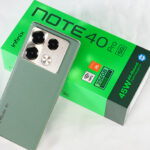
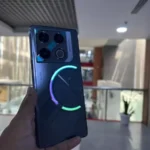




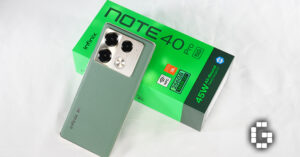

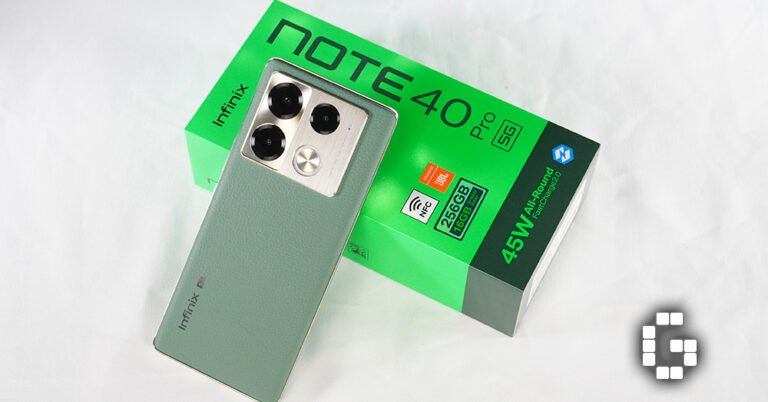
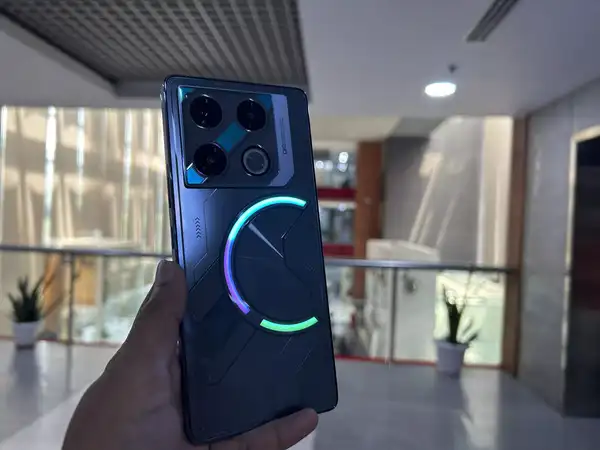
+ There are no comments
Add yours